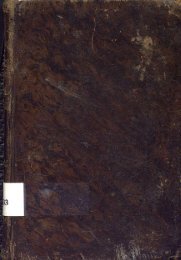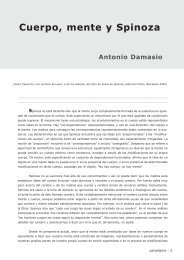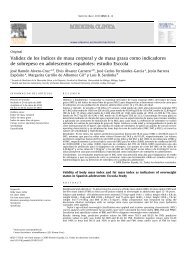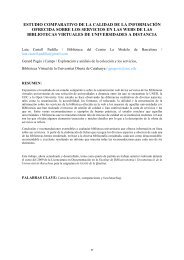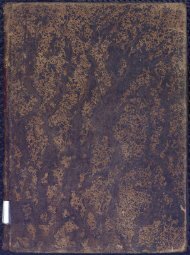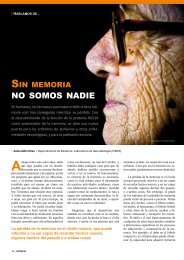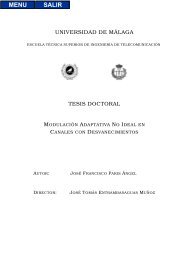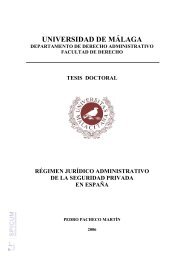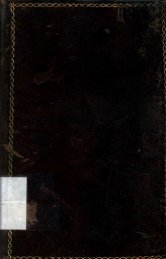Papel de las actividades superóxido dismutasa y catalasa en la ...
Papel de las actividades superóxido dismutasa y catalasa en la ...
Papel de las actividades superóxido dismutasa y catalasa en la ...
Create successful ePaper yourself
Turn your PDF publications into a flip-book with our unique Google optimized e-Paper software.
1. Introduction<br />
Solea s<strong>en</strong>egal<strong>en</strong>sis (Kaup, 1858) is one of the new candidate species for<br />
aquaculture in the Portuguese and Spanish coasts [1]. One of the main limiting factors<br />
in its production is pseudotuberculosis, due to the bacterial pathog<strong>en</strong> Photobacterium<br />
damse<strong>la</strong>e subsp. piscicida [2-4]. There are several means of protection against this<br />
microorganism, including antibiotherapy, although the use of antibiotics leads to the<br />
appearance of resistant strains [5]. Vaccination is another option which has be<strong>en</strong><br />
<strong>de</strong>monstrated effective protection against pseudotuberculosis in sole [4].<br />
Since immunostimu<strong>la</strong>nts mainly facilitate the function of phagocytic cells and<br />
increase their bactericidal activities, it may be possible that immunostimu<strong>la</strong>nts<br />
administration to fish increase the respiratory burst activity of the phagocytes and<br />
<strong>en</strong>hance the protection against pseudotuberculosis. Several authors have reported that P.<br />
damse<strong>la</strong>e subsp. piscicida has the ability to survive as an intracellu<strong>la</strong>r pathog<strong>en</strong> [6-10].<br />
The search for new immunostimu<strong>la</strong>nt ag<strong>en</strong>ts is mainly due to the great <strong>de</strong>velopm<strong>en</strong>t of<br />
fish farming and the stress situations and diseases, which arise from int<strong>en</strong>sive culture<br />
[11].<br />
Several polysacchari<strong>de</strong>s, such as chitin, chitosan and β-glucans obtained from<br />
crustaceans and yeasts have be<strong>en</strong> used in fish and shellfish as immunostimu<strong>la</strong>nts [11-<br />
18]. Due to their cont<strong>en</strong>t in polysacchari<strong>de</strong>s, algae could be an alternative source to<br />
obtain polysacchari<strong>de</strong>s easily. Polysacchari<strong>de</strong>s from Spirulina p<strong>la</strong>t<strong>en</strong>sis and Chlorel<strong>la</strong><br />
have be<strong>en</strong> <strong>de</strong>monstrated their immunomodu<strong>la</strong>ting capacity in mammalian mo<strong>de</strong>ls [19-<br />
21]. However, few studies have be<strong>en</strong> focused on the immunostimu<strong>la</strong>nt properties of<br />
algal polysacchari<strong>de</strong>s in farmed fish [22, 23, 24]. The red microalga Porphyridium<br />
cru<strong>en</strong>tum excrete a sulphurized polysacchari<strong>de</strong>, commercially used in the industry as<br />
thick<strong>en</strong>er, stabilizer and emulsifier for its gelling properties [25-28]. This<br />
polysacchari<strong>de</strong> is an acidic heteropolymer composed of xylose, glucose, ga<strong>la</strong>ctose and<br />
sulphate esters [29]. In a previous study, Morris et al. [30] suggested a possible<br />
stimu<strong>la</strong>tion of the metabolic and functional action of phagocytic cells of Balb/c mice<br />
after an intraperitoneal administration of polysacchari<strong>de</strong>s iso<strong>la</strong>ted from cultures of P.<br />
cru<strong>en</strong>tum in stationary phase.<br />
3



